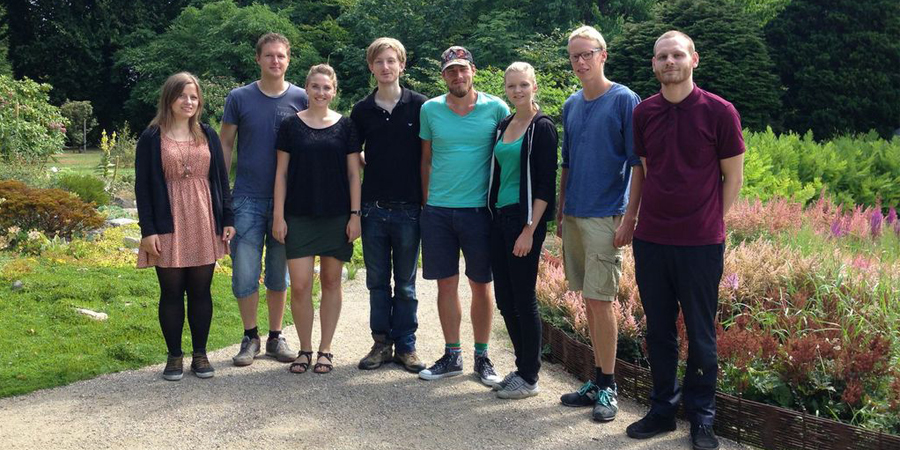Team:UNIK Copenhagen
From 2013.igem.org
SigneKarlsen (Talk | contribs) |
SigneKarlsen (Talk | contribs) |
||
| Line 11: | Line 11: | ||
<head> | <head> | ||
<style type="text/css"> | <style type="text/css"> | ||
| + | /*---------------------------------------------*/ | ||
| + | /* Fonts */ | ||
| + | /*---------------------------------------------*/ | ||
h3{ | h3{ | ||
font: bold 30px Helvetica; | font: bold 30px Helvetica; | ||
| Line 28: | Line 31: | ||
font: 22px Helvetica; | font: 22px Helvetica; | ||
} | } | ||
| + | /*---------------------------------------------*/ | ||
| + | /* Set up of content */ | ||
| + | /*---------------------------------------------*/ | ||
.the_content{ | .the_content{ | ||
max-width: 960px; | max-width: 960px; | ||
| Line 43: | Line 49: | ||
z-index: 0; | z-index: 0; | ||
} | } | ||
| - | + | /*---------------------------------------------*/ | |
| + | /* The image slider */ | ||
| + | /*---------------------------------------------*/ | ||
#container{ | #container{ | ||
position: relative; | position: relative; | ||
| Line 100: | Line 108: | ||
/*background-color: rgba(0, 51, 51, 0.8);*/ | /*background-color: rgba(0, 51, 51, 0.8);*/ | ||
| - | |||
background: -moz-linear-gradient(left, rgba(0,0,0,0.8) 0%, rgba(0,0,0,0.8) 1%, rgba(0,0,0,0) 92%); /* FF3.6+ */ | background: -moz-linear-gradient(left, rgba(0,0,0,0.8) 0%, rgba(0,0,0,0.8) 1%, rgba(0,0,0,0) 92%); /* FF3.6+ */ | ||
background: -webkit-gradient(linear, left top, right top, color-stop(0%,rgba(0,0,0,0.8)), color-stop(1%,rgba(0,0,0,0.8)), color-stop(92%,rgba(0,0,0,0))); /* Chrome,Safari4+ */ | background: -webkit-gradient(linear, left top, right top, color-stop(0%,rgba(0,0,0,0.8)), color-stop(1%,rgba(0,0,0,0.8)), color-stop(92%,rgba(0,0,0,0))); /* Chrome,Safari4+ */ | ||
| Line 111: | Line 118: | ||
font: bold 20px Helvetica; | font: bold 20px Helvetica; | ||
} | } | ||
| + | #slide_video{ | ||
| + | color: black; | ||
| + | width: 935px; | ||
| + | height: 330px; | ||
| + | } | ||
| + | #slide_video_object{ | ||
| + | } | ||
| + | /*-----------------------------------------------------------*/ | ||
| + | /* Panel of 4 photos directing to further down the page */ | ||
| + | /*-----------------------------------------------------------*/ | ||
#four_photos{ | #four_photos{ | ||
height: 183px; | height: 183px; | ||
| Line 132: | Line 149: | ||
margin: 0px; | margin: 0px; | ||
} | } | ||
| + | /*---------------------------------------------*/ | ||
| + | /* The go-to-top-of-page buttons */ | ||
| + | /*---------------------------------------------*/ | ||
#line{ | #line{ | ||
border-bottom: 1px solid #999999; | border-bottom: 1px solid #999999; | ||
| Line 151: | Line 171: | ||
padding: 0px; | padding: 0px; | ||
} | } | ||
| + | /*---------------------------------------------*/ | ||
| + | /* CSS of Q/A part */ | ||
| + | /*---------------------------------------------*/ | ||
.subject, .description{ | .subject, .description{ | ||
float: left; | float: left; | ||
| - | |||
} | } | ||
.subject{ | .subject{ | ||
| Line 166: | Line 188: | ||
padding: 25px; | padding: 25px; | ||
} | } | ||
| - | |||
| - | |||
</style> | </style> | ||
| Line 266: | Line 286: | ||
<li class="pictures"> | <li class="pictures"> | ||
<div id="slide_video"> | <div id="slide_video"> | ||
| - | <iframe id="slide_video_object" width="480" height=" | + | <h3> Watch our video<br>to learn more<br>about our project </h3> |
| + | <iframe id="slide_video_object" width="480" height="300" src="//www.youtube.com/embed/Y6xQG2dA0tA?feature=player_detailpage" frameborder="0" allowfullscreen></iframe> | ||
</div> | </div> | ||
</li> | </li> | ||
Revision as of 12:17, 1 October 2013
 "
"


















